Scott Reynolds
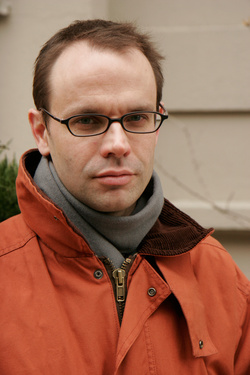
When did you first find your love for theatre and poetry?
It’s tough to pinpoint. I do remember that my school was pretty active in bringing in interesting groups. A group that performed a narrative of a Native American tale through puppets, for example.
Or there was a Puss in Boots performance that had these Brechtian puppeteers who would manipulate the puppets visibly so you could see them up on stage with the puppets themselves.
So I would say that from an early age I got a fair amount of exposure to exciting things that could be done in the theatre.
Were you always interested in directing and producing, or was that a later pursuit after your other theatrical interests?
That came a bit later. I wound up always being the guy who organized skits and contributions to road shows and things from our youth groups growing up, but I had some fun acting in high school and got enough positive feedback about that that when I went to college I thought that’s what I would spend my time focusing on.
It became clear after a while that I probably had more to offer by bringing people together and making theatrical events happen through a merging of unique combinations of talent.
Where did you study and what were some of your concentrations as a student?
At BYU I was pretty heavily invested in what was called at the time the acting track before I got more interested in directing.
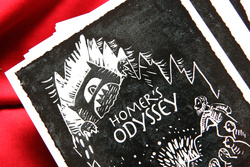
So you were a BFA-in-acting major?
I was. I was preparing for that and then at one point I felt that I was being irresponsible and sort of veered into an English teaching degree. I still kept myself really busy with theatrical projects and finally just realized that to graduate in an amount of time that was acceptable to me I needed to just get a theatre BFA and get out.
It was the directing projects that wound up taking most of my time and that opened my eyes to how deep of a well making theatre could be—all the exciting possibilities that can come out of putting a bunch of talented people together. I noticed that I had the skill of being able to draw the right things out of different people that could bring a project into fruition. That that was something I was particularly good that not everybody was good at, so I thought I’d try more of it.
Most artists can cite mentors or classes that triggered something in them to pursue a strong singular focus. Is there any one person or moment you can identify that spurred you into your creative life?
I had a professor named Charles Metton who taught a directing class that I took. It was in the phase where I was convinced that I really ought to do something more responsible with my life even though I’d been enjoying myself. But there was a day where three of us in the class put on our directing projects for feedback from the film class members. This professor took three of us aside afterward—and said that it had been a unique experience for him to have seen three projects of that caliber all on the same day. He told us that we ought to seriously consider careers in directing.
If I hadn’t had that sort of verbal encouragement, I don’t know if the unique challenges of trying to make things happen in this field would have felt surmountable to me.
Did you move to New York City soon after you finished school? What were some of your initial goals when you got here?
There was a diversion immediately after graduating from BYU. I was accepted into a playwriting MA at Boston University. It was a neat program where the first year was completely covered by stipends and there were only two days of class per week where you brought in material you were writing and it was read by professional actors from the Boston area. It was a great chance to really immerse myself in writing, so I did that.
Then I had a friend who I’d had a discussion with about eventually starting up a company somewhere on the East Coast. He had just left an acting program at Rutgers and was available, so that seemed like the next best thing.
The rest of the MA program involved paying a lot of money for English classes through Boston University and, given that there didn’t seem to be a lot of job opportunities that would open up by having an MA in Playwriting, I decided to go ahead and not complete the degree, but take what I’d really gone to the program to get and move to New York and start up this company with that actor friend, Barrett Ogden.
We joined up with another friend from BYU who had just finished being the company manager for a Shakespeare theatre in Washington and was making a go at being a theatrical agent at William Morris. Together we started up Handcart Ensemble.
The idea behind the name grew out of our having a shared pioneer ancestry and the idea of taking on big things with minimal resources, which was definitely the case in our situation.
Our first production was a version—a translation that I did actually—of Jean Racine’s Andromaque, and we did that for under $5,000 with money that I convinced some family members to put up as seed money.
They did that, and my father, I think, particularly expected things to not go well and for this to be just an opportunity for me to see that this wasn’t a sensible direction to go in.
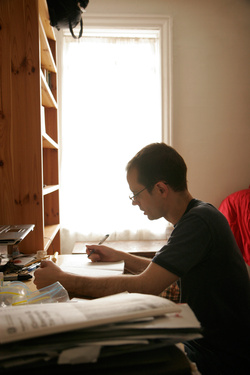
To give background to people who may not know about the New York theatre industry, that $5,000 may seem like a lot for an independent production, but productions in New York City—even off-off-Broadway—can cost anywhere from $20,000 to $100,000 on average, right?
Yeah. So for this city that was definitely a shoestring.
We did it above a bar downtown and the facilities were pretty horrific and the air conditioning was unreliable. But we used a lot of people that had been actors and were from our BYU circle that we’d gone to school with and they in turn had friends in their wards and so on who were excited by the idea of a bunch of Latter-day Saints doing a production in the city. We actually managed to pack the houses pretty well for that first production, and to do a little better than break even—with the money we raised beyond that, we were able to do additional projects.
So what were the inspirations and collaborations that lead you to create Handcart Ensemble? What was your original artistic mission for Handcart Ensemble? How do you feel it has evolved over the years as your theatre community has changed and as the company has grown?
I don’t know that it has changed a whole lot. Our original mission statement was that we’re a theatre company that does new adaptations and translations that draw upon classical work, and we have continued to work primarily in that vein.
Our interest has been in combining the work of contemporary writers and poets who are doing great and exciting things in other areas and have taken on the work of translating and adapting material that doesn’t always get experienced in either a theatrical setting, or an American, setting because of language. For example, the Goldoni piece that we did years ago or the Odyssey that we did which combined a non-theatrical text with one of the the great living poets of our time.
I guess what may have changed is that early on our budgets were low enough that we couldn’t afford to pay royalties. So I and people I knew were doing the adapting early on.
Now we’ve had the privilege of doing New York premieres of adaptations by writers—poets in particular—such as Seamus Heaney, Ted Hughes, who died a few years before we did the New York premiere of his Alcestis, and the theatrical premiere of Simon Armitage’s Odyssey, originally adapted for BBC radio.
As you’ve experienced challenges—budgetary, artistic, and whatnot—do you feel that your original mission has changed at all?
I feel that our mission has stayed fairly consistent, but our audience has certainly expanded. Originally no one knew who we were, so we were relying on friends and people we knew from church to come see our shows, but the novelty of that wore off for purposes of our immediate circle.
Thankfully we’ve now been able to draw an audience from the off-Broadway theatre-going community and that has really been our strength for the last few years. And I see that as a positive thing. That’s where we’ve wanted to get to.
How has your membership in the church and your testimony of the gospel influenced your artistic and business choices with Handcart Ensemble?
The Greeks were always fascinated and preoccupied by questions of the eternal, and whether it’s in the tragedies or the epics, there is always something about the story that is deeply rooted in family relations.
Being blood relations goes deeper than the biological fact of it; there are these deep spiritual roots or ties that people have that draw them together and that then makes ruptures in those relations all the more pronounced and impactful on those that experience them.
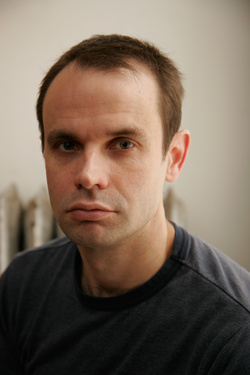
Beyond the literary significance of your play choices, though, is that part of your process of choosing certain material?
I suppose that as a Latter-day Saint that my religion is certainly something that is an important part—the idea that family ties are deep and eternal in their significance. When I see a play like Alcestis which deals with this idea of blood bonds having a rootedness that goes beyond the grave, that’s something that I’ll identify with and be attracted to.
How do you see your work contributing to the establishment of Zion, specifically in New York City.
In the gospel, Zion is defined as being a state of oneness. I guess I’d like to think that the material I’ve chosen deals with things that people universally connect with, and that the time that we spend in the theatre together is time where we are able to bond and relate to each other through those shared things. Be it family, be it loss, and be it redemption—all those things I think are actively dealt with in the plays that we have chosen.
Recently the Odyssey was reviewed by the New York Times and The New Yorker and other critics of influence. Do you feel like that has put a more public face on Handcart Ensemble and what you are doing?
It’s certainly been helpful. A review isn’t necessarily the best measure of a work because it’s one person’s experience on a given night, but the fact is that after the Times review came out, the rest of our run had sold out by the next morning. So that sort of thing certainly helps put us on the map. That’s what helped us to go on and extend for four additional weeks on what was expected to be a very short run. And it’s given us the impetus to go forward and hold a backer’s audition for investors and pursue other avenues of funding that we anticipate will allow us to put on the Odyssey on a much larger scale.
What are your thoughts about the progression of Mormon theatre in and out of NYC? Is there Mormon theatre as there is Mormon cinema? And do you feel there is a place for LDS-themed theatre?
I feel there is a place for everything in the theatre. I think the Latter-day Saint community has a rich enough story that if people want to deal with that directly through plays and whatnot, there is certainly a place for it.
My choices have been drawn more towards existing classical material and works that are only available in foreign and classical languages with great writers that together have been able to breathe new life into them.
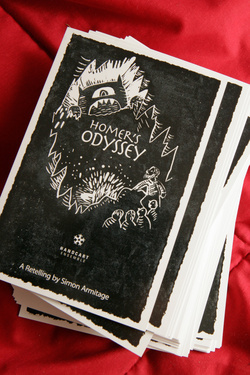
What are your thoughts on artistic integrity verses commercial success in the theatre industry?
That’s the balance that maybe until recently I haven’t always done as good a job of trying to find. I would say that early on when we didn’t have much to lose I was pretty much free to try whatever material I was attracted to.
With some productions the first consideration was to find things that were commensurate with our mission statement. I was specifically looking for translations and adaptations that great writers were doing of classical material that I thought were great works of literature in and of themselves, like the Ted Hughes translation of Alcestis. Alcestis is not a play that most people have heard of, and it was not the most commercially viable choice. I guess I felt at the time that we were still a young company that was doing things differently from what other people were doing and it was something we might as well do.
With the Odyssey I would say that was a self-conscious choice to try to do something that had those qualities, but that also had the potential to cast a broader net commercially.
Where do you hope to see your creative life and the life of Handcart Ensemble in the next five to ten years?
If we are able to enjoy some commercial success in whatever the next incarnation of the Odyssey is, I would really love it if there were opportunities to commission writers I admire who have a certain standing in the literary world to adapt works that I think have a lot of potential on the stage, or that haven’t be tackled yet, or that are ready for a new theatrical rendering.
I think that there are actually some biblical stories that haven’t yet been treated or that have stood the test of time that are ready for a gifted poet or writer to take on. There are works by modern and contemporary writers—novels—that have the potential for exciting theatrical life. I’d love it if there were some writers out there who could be attracted to adapting this material.
What advice would you give to aspiring LDS theatre artists in creating and producing new works of theatre in the world but not of the world?
In my case I haven’t felt that I’ve had to make a real choice there. I don’t know that there has to be a real choice. There is enough great material out there that is compatible with what practitioners of our religion believe to consume an entire career. There are all kinds of people doing all kinds of work. And there is just a lot of great material just waiting to be done, material that is just waiting for a proactive producer or director who wants to seize it.
What suggestions do you have for what steps people who are interested in producing or directing can take?
In becoming a director or producer there are as many routes as there are producers or directors. My particular choice has been to go at it from a long and patient slog where, rather than getting internships with regional theatres immediately after college and pursuing assistant directorial opportunities, I’ve chosen to work full time. I chose to produce my own work, funded partly by myself, and to build that up to a point where it has a life of its own and is a full-time endeavor. That’s a way of going about it that may or may not be right for people who want to do this.
In taking that route I’ve been able to choose my own material and to shape the direction the company has gone in to a degree that probably wouldn’t have been possible if I were working my way into the industry through the existing institutions and with established artists. It definitely is a longer route.
Is there anything else that you would like to share regarding your artistic life or Handcart Ensemble?
It’s been much harder than I ever imagined it would be, but it’s difficult to imagine my life since graduating from college without it because it’s been so enriching. It’s created so many opportunities for me personally and professionally that I couldn’t have experienced otherwise. I’m grateful to have been able to have it. ❧
